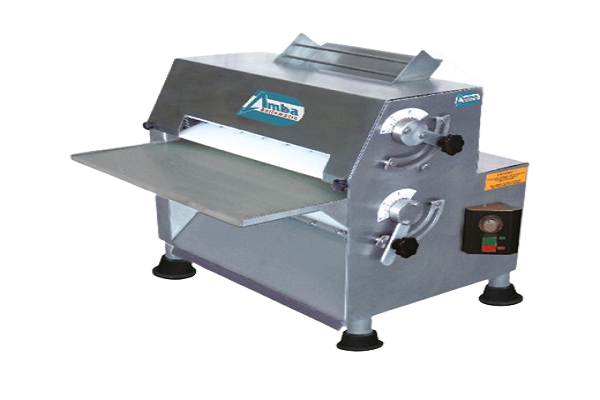Advancements in food processing technologies have significantly impacted the sweets and namkeen industry, improving product quality, efficiency, and sustainability. Despite challenges like cost and training, the industry has adapted through innovations like precision cooking, advanced packaging, and data-driven quality control. The industry is also committed to reducing its ecological footprint through waste reduction techniques, energy-efficient processes, and eco-friendly packaging alternatives.
Industry Voices: Conversations with Sweets & Namkeen Innovators
The text explores the relationship between technology and sweets and namkeen, focusing on the industry’s pioneers and experts. It discusses how innovation is influencing the growth, quality, and sustainability of these culinary treasures, and the evolution of food processing technologies in this dynamic sector.

As we delve deeper into the topic, Darshan Dhakan from A. M. Equipment’s Gujarat insights underscore the delicate balance between tradition and innovation. He believes that while tradition is a cornerstone value, integrating new technologies can actually enhance and fortify heritage rather than overshadow it.
Drawing parallels to the Indian market’s enthusiasm for new experiences, Darshan emphasizes how technology has become more user-friendly over the years.
He acknowledges the impact of food processing advancements in expanding the sweets and namkeen sector, addressing key aspects like size, packing, hygiene, and speed of mass manufacturing. By preserving product quality, uniformity, customization, and cleanliness, technology seamlessly complements traditional methods, ushering in an era of enhanced possibilities.

Arun Dadda, MD of Economode Food Equipment (I) Pvt. Ltd., discusses the transformation of the namkeen sector through cutting-edge food processing technologies. The shift from labour-intensive methods to automation has increased efficiency and improved product quality. This has led to precise control over production parameters, resulting in consistent high-quality products. The fusion of technology with hygiene and sustainability values further demonstrates the industry’s commitment to growth.

Expanding the conversation to global perspectives, Fawzia Khan, Director, Canada, USA, & South America, AAVEG Food Machines, delves into how technology has been embraced to enhance food quality and safety. She highlights automation as a tool to bolster operational efficiency and reduce workplace accidents, a crucial aspect in an industry that demands precision.
Fawzia’s reference to pandemic-driven automation exemplifies technology’s role in navigating challenges. Additionally, her mention of Oberlin Frying Oil Filters USA underscores how technology is employed to improve processes like frying, reducing costs and enhancing the quality of end products.
Fawzia’s insights resonate with the industry’s global nature, showcasing the universal application of technology in elevating food processing.

The conversation takes a turn towards the broader implications of technology for the food industry as a whole, as presented by Mohammad Aquib, Director, Grace Food Processing & Packaging Machinery. He elaborates on how food processing addresses multifaceted concerns, from food safety to the crucial issue of food waste reduction.
Mohammad’s portrayal of the industry as a bridge aligns with the industry’s evolving role in meeting modern demands. The synergy between technology and food processing, as he underscores, is the driving force behind the pursuit of innovation and optimization. His perspective ties back to the larger narrative of sustainability and the integration of technology to align with ecological goals, portraying the industry’s commitment to a greener future.
Challenges and Triumphs: Navigating Technology Integration
Darshan discusses the challenges of adopting technology in a traditional industry, particularly in the Indian market. Traditional methods may cause reluctance to use technology, possibly due to privacy concerns, trust issues, or resistance. However, innovative food product corporations have achieved success using technology. To overcome these challenges, Darshan suggests launching specific advertising efforts and showcasing technological productivity at exhibitions. The more people see these advancements, the more motivated they are to compete in the market.
Arun’s perspective is centred around the diverse landscape of the Indian snack and namkeen market. He acknowledges the challenge of blending traditional experiences with modern equipment. The crux of the challenge lies in meeting consumer expectations for high-quality products at reasonable prices.
Arun’s company, Economode, has navigated these waters for a quarter-century, focusing on product quality and cost-effectiveness. Their innovations encompass efficient resource consumption, reduced maintenance costs, and inventive equipment layouts to optimize factory space. He acknowledges the taste, flavour, and consistency challenges that arise when automating processes, highlighting how regulatory constraints compound the complexity.
Arun suggests education, gradual implementation, and expert guidance as key strategies to surmount these challenges.
Fawzia tackles oil waste in the snack industry using technology like Oberlin Filters for operational efficiency, energy conservation, and cost reduction. She introduces AAVEG ROASTERS, a pressurized hot air roasting system that eliminates the need for oil, sand, and salt, aligning with the industry’s growing focus on healthier products, energy efficiency, and automation. This innovative approach is transforming traditional roasting methods.
Mohammad Aquib discusses the challenges faced by the food industry as it adopts technology, focusing on core pillars like food safety, quality maintenance, and stringent standards. As the industry expands, it faces complexities that could impact its sustainable growth, particularly in the face of climate change and ecological concerns. The industry must align with broader environmental goals for responsible food production.
Pioneering Transformation through Technology: Real-World Examples
Darshan discusses how technology is being used by businesses to enhance the quality and efficiency of their products. For instance, Shah Jamnadas C. Ghariwala in Surat uses technology to maintain the balance of flavors and textures in their Ghari, while Stuti Foods in Surat mass-produces Khakhra. Naiviadhya Sweets in Raipur uses semi-automatic machinery for their samosa, Kandoi Bhogilal Moolchand in Ahmadabad for crispy methi puri, and Mr. Samosa in Bhavnagar for consistent quality Samosas.
Arun offers says that Economode Food Equipment is revolutionizing snack production with its automated batch fryers, which control temperature, cooking time, and oil levels, minimizing oil waste and ensuring uniform product quality. Their cutting-edge seasoning systems eliminate manual labour, and their energy-efficient dehydrators optimize energy consumption. Economode’s data analytics drive efficiency and quality control, ensuring the company remains at the forefront of snack production innovation.
Fawzia highlights the transformative power of automation in the food industry, citing VITO Germany’s filtration systems for microfiltration and e-commerce platforms for customer engagement. Social media, mobile apps, and chatbots provide deeper insights into consumer behaviours, enhancing product quality and savings. Digital transformation has reshaped the landscape in the food industry.
Fawzia underlines the critical role of technology in food safety and quality control, with digital sensors and cameras monitoring food safety to reduce the risk of food-borne illnesses.
Mohammad Aquib discusses the growing demand for convenience and health-conscious products, emphasizing the importance of food processing technologies in preserving ingredients and incorporating health-enhancing elements like prebiotics. He introduces innovative techniques like High-Pressure Processing (HPP) and extrusions, addressing the evolving need for healthier options.
Aquib emphasizes the symbiotic relationship between technology and sustainability, focusing on ecological, social, and economic factors to reduce environmental impact, minimize waste, and improve worker and community well-being.
Eco-Friendly Technologies for Waste Reduction and Energy Efficiency
Darshan underlines the importance of energy-efficient machinery, focusing on single-phase electricity for simplicity and cost-effectiveness. He suggests strategies to reduce energy and water usage, including cogeneration and trigeneration technologies, upgrading outdated equipment, and utilizing waste heat and recycling wastewater to minimize environmental impact.
Furthermore, Darshan introduces innovative technologies like High-Pressure Processing and Pulsed Electric Field, which preserve food quality and shelf life without relying on excessive energy or high temperatures. He underscores how the conversion of organic waste into biogas or renewable energy sources is not only an avenue for waste reduction but also a means to generate power sustainably.
Arun’s focus on sustainability underscores Economode’s leadership in the industry. The company’s specialization in commercial snack machines is underpinned by a commitment to reduce the carbon footprint and promote eco-friendly practices. Advanced technologies are harnessed to optimize energy usage while upholding product quality.
Economode prioritizes efficient heating systems, automated power management, and reducing edible oil oxidation. They use potato peels as fuel in their Fully Automatic Potato Chips Line and promote eco-friendly packaging to reduce plastic waste. Through real-time monitoring, data-driven optimization, and industry collaboration, Economode aims to minimize waste and energy consumption.
Fawzia emphasizes the escalating pressure on food manufacturers to reconcile production demands with reduced energy usage and carbon emissions. In this pursuit, manufacturers are compelled to explore innovative pathways to achieve efficiency.
Fawzia discusses strategies for transitioning from energy-intensive equipment to energy-efficient alternatives, promoting waste-to-energy conversion to generate renewable energy and reduce non-renewable resource reliance. Optimal process control through automation and real-time monitoring enhances equipment performance and productivity while minimizing energy waste.
In a world where energy conservation is paramount, Fawzia accentuates how these measures align production with sustainability imperatives.
Mohammad Aquib presents sustainability as a multi-faceted gem, replete with benefits for the industry, the environment, and society. By embracing sustainable practices, businesses reap rewards ranging from reduced environmental impact and an elevated industry reputation to substantial cost savings and heightened operational efficiency. Importantly, the quality of food produced experiences a notable enhancement.
In Aquib’s perspective, embracing sustainability is not merely a choice but a responsibility that embodies innovation and adaptation. It’s a transformative journey that stands to secure both the prosperity of the food processing industry and a profound positive impact on the planet and society at large. Through sustainability, the industry becomes a driving force for change and progress.
In our exploration of the dynamic synergy between technology and the world of sweets and namkeen, these voices collectively paint a vivid and comprehensive picture. From enhancing efficiency and quality to embracing sustainability, the culinary landscape is undergoing a remarkable evolution driven by innovation, adaptation, and a commitment to excellence.


